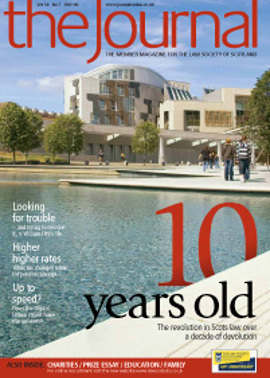Scant relief?

Pensions play an important role in the overall financial plans of many high earners. Their pension contributions typically benefit from 40% initial tax relief, and while there are restrictions on taking benefits, 25% of the fund can usually be taken as a tax free lump sum. Depending on the circumstances of the investor, it may also be that the remainder of the pension fund, when taken as income, may be taxed at basic rather than higher rate tax. At least that is how it used to work.
The Budget of 22 April 2009 introduced fundamental changes to pension legislation. Alistair Darling, the Chancellor, announced that from 6 April 2011 income tax relief on pension contributions will be restricted for those with total income (relevant income) of more than £150,000 per annum. For these high earners, pension tax relief will be tapered down until it becomes only 20% when relevant income reaches £180,000 per annum. These changes mean that high earners will need to ask whether it is sensible for them to make additional pension contributions.
Double hit
It is important to recognise that “relevant income” used in these calculations is not just salary, but total income chargeable to income tax. This will include any deductions from employment income for pension contributions made under net pay arrangements. It will also include salary exchange arrangements, where they were not in place prior to 22 April 2009.
While it may seem fair to provide the same level of tax relief for all people, there are significant differences between high earners and basic rate taxpayers that should be taken into account. High earners will be paying 40% tax on their income anyway, soon to be increasing to a top rate of 50%, whereas basic rate taxpayers will be paying only 20%. High earners also face a greater risk of then paying higher rate tax on their pension income when they draw benefits, whereas this is unlikely for a basic rate taxpayer. The prospect for high earners of getting tax relief at 20% and then paying tax on their pension proceeds at 40% or more does not sound too attractive.
Those high earners who accrue benefits in defined benefit (final salary) pension schemes, or where their employers make contributions on their behalf, will not escape the new rules. The Government has announced that equivalent tax charges will be in place and it will consult on how these will be applied.
Immediate effect
A change of rules coming into force in two years’ time would normally spark a flurry of activity as advisers and their clients try to circumvent any future problems. However, to prevent effective tax planning ahead of the 2011 start date, the Government has introduced new rules which may restrict tax relief on some pension contributions made from 22 April 2009.
These preventative measures will be imposed unless any of the following exceptions apply:
Relevant income is less than £150,000 in the current tax year and each of the previous two tax years.
Normal ongoing pension saving arrangements (protected pension input) are in place before 22 April 2009 and continue unaltered. If pension savings remain unaltered and involve regular contributions paid quarterly or more frequently then the preventative measures will not apply, even if relevant income is £150,000 or more in any tax year from 2007-08 to 2010-11.
Overall annual pension savings in 2009-10 and 2010-11 are less than the special annual allowance. The special annual allowance is £20,000 and includes existing normal ongoing pension saving arrangements. Therefore if normal pension savings arrangements are less than £20,000, a client can top up to £20,000 in 2009-10 and 2010-11 and still benefit from higher rate tax relief. However, if normal pension savings are more than £20,000, any additional pension savings by someone with relevant income of £150,000 or more will be restricted to 20% tax relief.
Next steps
It may not be immediately clear whether clients are affected by the changes. This will depend on their relevant income in the current and two preceding tax years and on their existing pension arrangements and previous contributions.
The first step is for clients to establish whether the new rules apply to them and whether existing pension contributions qualify as normal pension savings arrangements. This is likely to dictate the next steps.
Those with relevant income under £150,000 will not be affected by these changes and higher rate taxpayers will continue to benefit from 40% tax relief on their pension contributions. Depending on their tax position, pension income may not be subject to higher rate tax when taking benefits and this increases the potential benefits of making pension contributions.
Tax thresholds in the equation
The Chancellor also announced changes to income tax whereby an individual’s basic personal income tax allowance will be reduced by £1 for every £2 of “adjusted net income” above £100,000 from 6 April 2010.
For those with income above £100,000 they may be able to make a pension contribution to reduce their adjusted net income to below the £100,000 threshold. They may then benefit both from higher rate tax relief on their pension contribution and by preserving their income tax personal allowance. This could provide clients with an effective tax relief rate of up to 60% on their pension contributions.
For those with relevant income above £150,000, it is important to assess the impact of the changes on their eligibility for higher rate tax relief on pension contributions. They will continue to benefit from higher rate relief on normal ongoing pension savings, or up to £20,000 if greater in 2009-10 and 2010-11. Indeed, in 2010-11 the highest rate of income tax will be at 50% and so there will be even more reason to ensure this £20,000 allowance is utilised.
Where high earners currently have no normal ongoing pension savings, they should look to utilise their £20,000 special annual allowance in 2009-10 and 2010-11 as they will still benefit from higher rate tax relief. However, it will no longer be appropriate for them to make additional pension contributions in excess of the £20,000 limit. These high earners will therefore need to carefully investigate their overall financial plan and consider alternative means of long-term retirement planning.
Investment considerations
Clients should look at investment structures that offer both tax advantages and flexibility.
The proposed increased ISA limit to £10,200 per annum is welcomed. However, some clients may also benefit from specialist advice on tax-led investments offering income tax reductions. For example, the Budget announced changes affecting Enterprise Investment Scheme (EIS) investors. The carry-back facility which allows for income tax relief to be claimed has been increased to £500,000. This, together with the standard limit, could potentially allow clients to participate in up to £1 million of EIS qualifying investments in the current year. In addition, Venture Capital Trust (VCT) investments allow for income tax relief to be claimed on up to £200,000 each year. It should be recognised, though, that these investments can carry high degrees of risk and so will not be suitable for all clients.
Treating as individuals
The new pension rules are complex and high earners need to understand how they are affected. You need to ensure that your clients know whether the new rules apply to them, whether existing pension arrangements are protected, and what their next steps should be.
The most appropriate course of action will depend on their individual circumstances, and so it is important that they take the right professional advice to react to these changes in the short term, and if necessary adapt their longer-term financial plans.
Bryan Innes is Senior Client Partner at Towry Law, Aberdeen
In this issue
- Solicitor advocates: the future
- For the love of it
- Not to be denied
- Ten years on
- Never say never
- MD becomes new Keeper
- Whose view prevails?
- Scant relief?
- The greater good
- Twenty out of ten
- First class
- Clean break
- Ask Ash
- Not quite switched on
- Beware salary waiver tax traps
- Road to recovery?
- ASBOs: what standard?
- Scotland the unready
- The limits of listing
- Debt traps
- Tread warily
- Scottish Solicitors' Discipline Tribunal
- Website review
- Book reviews
- Procurement remedies take shape
- Clauses become more standard






